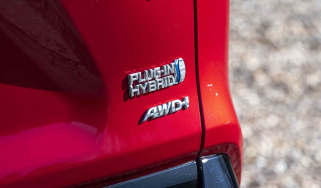What is GAP insurance and why do you need it?
A GAP insurance quote can be as low as £100 for three years, but could save you thousands after an accident

If you own a car on finance and need to insure it, a Guaranteed Asset Protection insurance policy is worth considering. GAP insurance is a relatively new option on the market, although it was developed in America during the eighties. With the majority of UK consumers now opting for car finance to get behind the wheel, GAP insurance is growing in popularity.
But what is GAP insurance? It's also known as 'shortfall cover' and different levels of cover are available, although they all operate under a broadly similar principle.
When you own your car outright and it gets written off in an accident, your insurance company will reimburse you what it considers to be the 'market value' of the car. This is usually less than what the car is actually worth which is where the extra cover comes in. But is GAP insurance worth it?
All insurance seeks to financially indemnify you at the time of the loss, which essentially means you can’t be left worse off than at the point of the loss. It’s worth bearing in mind that the shortfall between market value and the cost of a replacement for a car you own outright may actually be less than the cost of the GAP premium.

GAP insurance cover makes a lot more sense if you’ve purchased a car on finance and it gets written off. Even if the accident wasn’t your fault, you might end up owing the finance company more money than your insurer is willing to pay out, meaning you’ll still be paying for a car you no longer have. It’s still worth careful research and consideration before taking the plunge to take out GAP insurance for this situation, because there can be a large number of factors at play, including the coverage that your standard insurance policy offers.
For instance, most comprehensive insurance policies offer a ‘new car replacement’ clause if your car is written off and it is less than 12 months old - some even extend this period to two years. This being the case there is no shortfall, so GAP insurance is irrelevant.
If you take out a GAP insurance policy, be sure to look at the terms and conditions carefully: some optional extras won’t be covered and it’s unlikely you’ll get your money back on any aftermarket extras you’ve fitted. Do also note that your standard insurance policy must be fully comprehensive and your car must have been a total write-off in order to make a claim on your GAP insurance policy.
GAP insurance cost
It’s common practice for dealers to offer a GAP insurance policy when you’re buying a new car. While the idea of GAP insurance is good, dealers’ policies can be expensive – up to five times more expensive, in fact, than a policy from a third-party insurance company.
In 2015, the Financial Conduct Authority (FCA) investigated how the GAP insurance industry operated and considered it poor value for money. For every £10 paid for GAP insurance policies by consumers, only £1 was paid out by providers, making GAP insurance very expensive.
As a result of the FCA investigation, dealers offering GAP insurance must now make buyers aware that third-party policies are available. There must also be a two-day delay – or ‘cooling-off period’ – between when the policy starts and when it must be paid for.
GAP insurance quote comparison – third party versus dealer
Getting a GAP insurance comparison quote from third-party sellers is always a good idea before you pay for a dealer’s policy. If you’re fairly certain what car you’re buying, it’s best to arrange this before you drive away for the first time. Before agreeing to any GAP insurance policy, make sure you’re happy with:
– How long it lasts. Most are three years, the typical length of a finance agreement
– How much the GAP insurance policy thinks your car is worth
– If there are any exclusions and how much the policy excess is
Types of GAP insurance
While all GAP insurance policies work along similar lines, as with most insurance policies it’s possible to buy different levels of cover.
Return-to-value GAP insurance: If your car is written off as a result of an accident or theft, a return-to-value policy will make up any shortfall between what your normal insurance policy will pay out and what your car was valued at when you took out the GAP policy, ensuring you will not end up in debt to the finance company.
Return-to-invoice GAP insurance: This works in the same way as a return-to-value policy, but instead of paying out what the car was worth when you took out the policy, return-to-invoice GAP insurance will reimburse you the original price you paid for the car when you bought it from the dealer.
Vehicle replacement GAP insurance: As the name suggests, a replacement vehicle policy will pay for a new car of the exact same specification as the written-off car, even if the list price has risen. A vehicle replacement GAP policy will usually require that your car is less than three months old and only has nominal mileage – usually fewer than 500 miles – when you take out the policy.
Car finance made simple
- New car finance explained
- Used car finance: top tips
- PCP car finance explained
- HP car finance explained
- PCH car finance explained
- PCP vs HP: car finance options
- PCP car finance on used cars
- Car finance negative equity explained
- How to refinance a car
- Getting car finance with bad credit
- What are guarantor loans?
- What is an HPI check?
- What is GAP insurance?
- Van finance explained
- Car finance made simple
Recommended

Best car leasing deals 2025: this week’s top PCH offers

Petrol and diesel car ban relaxed with hybrids permitted beyond 2030

Classic car tax exemption: which historic vehicles qualify?
Most Popular

Polestar 3 review – upmarket and well-built SUV contender
Newsletter signup form
Tips & advice

Car dashboard warning lights: what does each symbol mean?

Electric car charging stations: public networks, charger types, apps and maps








